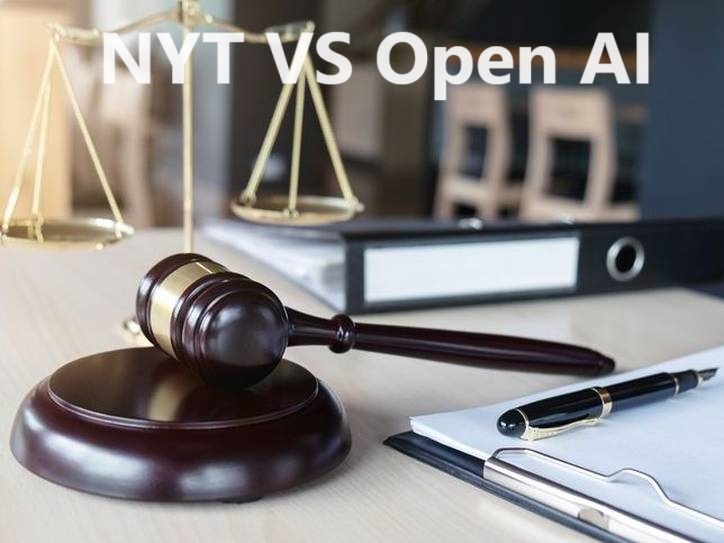The use of copyrighted content for training large language models (LLMs) raises legal considerations related to copyright law. Copyright law grants creators’ exclusive rights to their original works, including literary and textual content. When training LLMs, especially those powered by machine learning and artificial intelligence, the process typically involves exposing the model to vast amounts of text data, which may include copyrighted material.
On December 27, 2023, The New York Times filed a lawsuit against OpenAI and Microsoft, accusing them of copyright infringement. Here’s a breakdown of the key reasons behind the lawsuit:
The New York Times’ Claim:
i) The Times alleges that OpenAI used millions of its copyrighted news articles to train its large language model (LLM), ChatGPT, without permission or compensation.
ii) They argue that this constitutes copyright infringement, as OpenAI copied substantial portions of their work without authorization.
iii) The Times claims this unauthorized use has impacted their business, potentially diverting readers and impacting ad revenue.
OpenAI and Microsoft’s Position:
i) OpenAI and Microsoft haven’t yet officially responded to the lawsuit, but they likely will argue that their use of The Times’ content falls under fair use exceptions to copyright law.
ii) Fair use typically allows limited use of copyrighted material for purposes such as criticism, commentary, news reporting, or teaching.
iii) OpenAI might argue that using The Times’ articles to train ChatGPT falls under these categories, claiming it helps the LLM better understand and process real-world information.
Key Issues in the Lawsuit:
i) This lawsuit raises crucial questions about the use of copyrighted material in training LLMs.
ii) It will test the boundaries of fair use in the context of new and evolving technologies like AI.
iii) The outcome could have significant implications for LLMs, news organizations, and the future of AI development.
Legal Interpretation
The legal position in using copyrighted content for training LLMs can be complex and may vary based on jurisdiction and specific circumstances. Here are some key considerations:
a) Fair Use Doctrine:
i) In some jurisdictions, there may be provisions for “fair use” or “fair dealing” that allow for the use of copyrighted material for purposes such as research, education, and criticism.
ii) The application of fair use depends on factors like the purpose of use, the nature of the copyrighted work, the amount used, and the effect on the market value of the original work.
b) License Agreements:
i) Content used for training LLMs may be subject to specific license agreements. If the data used is licensed for research or educational purposes, it may provide a legal basis for such usage.
ii) Some datasets explicitly state the terms under which they can be used, and compliance with these terms is crucial.
c) Transformative Use:
If the use of copyrighted content is transformative, meaning it serves a different purpose or adds significant value beyond the original work, it may strengthen the argument for fair use.
d) Public Domain:
Content in the public domain is not subject to copyright restrictions. If the training dataset includes material in the public domain, it can be used without copyright concerns.
e) Permission from Copyright Holders:
Obtaining permission from copyright holders to use their content for training purposes is a straightforward way to ensure compliance with copyright law.
f) De Minimis Use:
If the amount of copyrighted content used is minimal or inconsequential, it may fall under the “de minimis” doctrine, which recognizes that trivial uses may not infringe on copyright.
It’s important to note that the legal landscape is dynamic, and interpretations of copyright law can evolve. Legal advice from intellectual property experts is recommended to navigate the specific circumstances surrounding the use of copyrighted content for training LLMs. Additionally, staying informed about any updates or changes to copyright laws in relevant jurisdictions is crucial for responsible and legal use of copyrighted material in AI research and development.
Potential Outcomes:
i) The lawsuit could be settled out of court, with both parties reaching an agreement regarding compensation or usage terms.
ii) If the case goes to court, it could set a precedent for future cases involving fair use and AI.
iii) Regardless of the outcome, this lawsuit is likely to spark further debate and discussion about the ethical and legal implications of using copyrighted material to train LLMs.
This situation is still unfolding, and it’s important to stay updated on the latest developments. The outcome of this lawsuit could have a significant impact on the future of AI and intellectual property protection.


